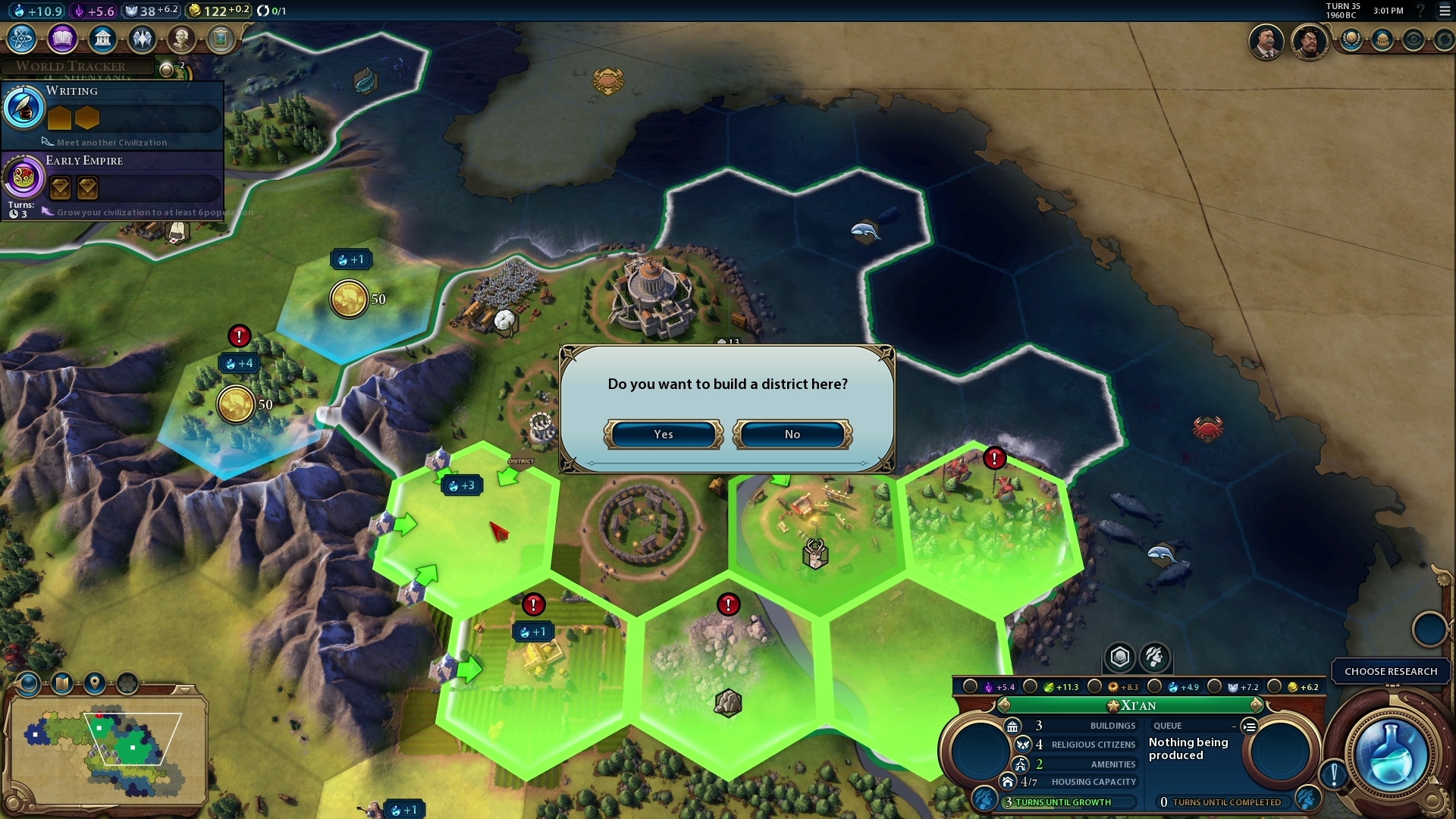Districts are the new big thing now in Civilization 6. A brand new feature that really changes the face of the entire game and makes your placement of cities much more important than it used to be. So what are districts exactly?
Step 1)What is a district?

A district is a part of the city that is located outside of the city center itself. These are specialized pats of the city itself, such as industrial, religion, housing, or gold production. Districts will have buildings that can be built within them that relate to that specialty. For example, the campus district is where you would build your library, and the encampment district is where you build your barracks. To take this one step further, if you have a harbor your ships will be built there, and your military units will arrive at your encampment district instead. This allows land locked city centers to become coastal centers where they can still build ships.Your cities will need to meet a certain population criteria to build districts, with higher population being able to support more districts. The only exception to this is neighborhoods and aqueducts.
Step 2)Adjacency bonus

With all of the production districts they each gain unique bonuses if they are build next to something specific. Holy sites and Campus districts will benefit from mountains. Commercial districts will benefit from rivers and harbors. Harbors will benefit from coastal resources. The theater will benefit from adjacent wonders of any kind. The industrial zone will benefit from being next to mines or quarries. Now, on top of these, all of these districts will also get a bonus if they are next to two other districts. This can benefit you just by building them near each other as well.
Step 3)Area of effect bonuses

Another thing to keep in mind is that with the entertainment and industrial districts they will have buildings that can be built in them that will share their bonus with other cities. Any city within six tiles of a factory for example will receive the benefits as well as the city that actually owns the district. Keep this in mind when building both your cities and districts to maximize their effectiveness.
Now that you know what they are and how to use them, you can choose to produce them from the city production screen. Build some nice cities, and then build your empire.
Step 1)What is a district?

A district is a part of the city that is located outside of the city center itself. These are specialized pats of the city itself, such as industrial, religion, housing, or gold production. Districts will have buildings that can be built within them that relate to that specialty. For example, the campus district is where you would build your library, and the encampment district is where you build your barracks. To take this one step further, if you have a harbor your ships will be built there, and your military units will arrive at your encampment district instead. This allows land locked city centers to become coastal centers where they can still build ships.Your cities will need to meet a certain population criteria to build districts, with higher population being able to support more districts. The only exception to this is neighborhoods and aqueducts.
Step 2)Adjacency bonus

With all of the production districts they each gain unique bonuses if they are build next to something specific. Holy sites and Campus districts will benefit from mountains. Commercial districts will benefit from rivers and harbors. Harbors will benefit from coastal resources. The theater will benefit from adjacent wonders of any kind. The industrial zone will benefit from being next to mines or quarries. Now, on top of these, all of these districts will also get a bonus if they are next to two other districts. This can benefit you just by building them near each other as well.
Step 3)Area of effect bonuses

Another thing to keep in mind is that with the entertainment and industrial districts they will have buildings that can be built in them that will share their bonus with other cities. Any city within six tiles of a factory for example will receive the benefits as well as the city that actually owns the district. Keep this in mind when building both your cities and districts to maximize their effectiveness.
Now that you know what they are and how to use them, you can choose to produce them from the city production screen. Build some nice cities, and then build your empire.

